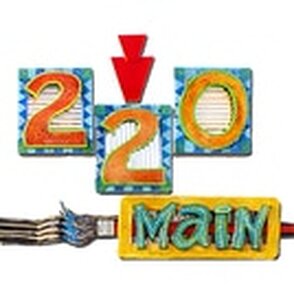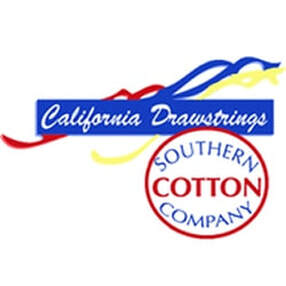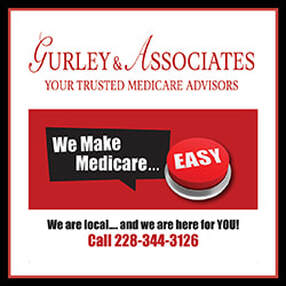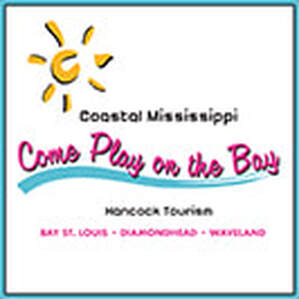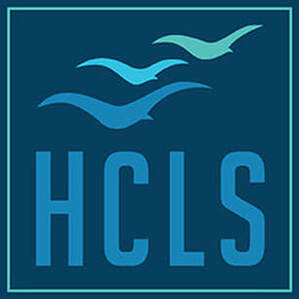Best ever evacuation list by Madeleine Ammentorp
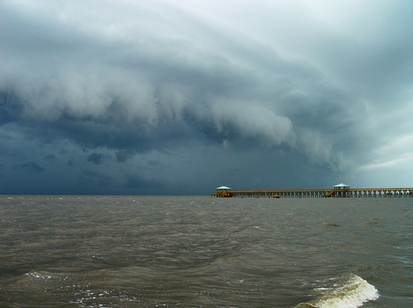
First bands of Gustav, 2008.
Cleaver subscriber and 4th Ward resident Madeleine Ammentorp submitted the following list of things to take with you if evacuation becomes necessary. We'll leave it posted here for future reference. Here's hoping we don't have to use it for a long time!
That catchy phrase of “important papers.”
I don’t really think emergency advice is specific enough when they say important papers but it the same time a check list is very intimidating. What follows is the stuff I take but I had it prepared months before Katrina – I worked on it a little at a time over months. Even still, I left scads of photographs, all my grandmothers jewelry and some very special art work. Next time I have to evacuate I am leaving the clothes and taking more of the personal mementoes.
Take:
Full copy of fire insurance, endorsement page, proof of payment
Same as above for flood
Same as above for wind
Same for automobiles. Any car titles. If your car is a total loss the turn around time for an insurance settlement may be cut down to a mere number of days.
Photos of every draw, closet, cabinet, room, wall, behind doors, cellar, outside storage, under beds, attic, include rugs and floor coverings. Photo every tree, garden, side of your house, as close and as far away from your roof, play house, garage, photos of contents of storage bins, storage boxes. If you have a copy of your home’s house plan take it. It helps for catastrophic claims.
Photograph the make, model, serial numbers on any item over $200.00* Include cameras, pda’s, computers, monitors, televisions, radio and stereo equipment
Photograph in detail any hobby supplies and equipment.
Photos of all china, silver, coins, etching, water color, art, yard art, jewelry including costume, rare book cover and 1st page, oil painting (basically photograph anything that is outside typical ownership or which may be hidden away)*
*digital cameras are best for this. A 2,000 sq.ft. house should take about 2 hours to photograph. It is from this you can write out and prove your contents. Some people use a cam recorder but I found it difficult to work with those pictures and to do the insurance inventory
Full list of credit cards: include address and phone numbers of customer service
Full list of bank accounts and investment accounts. Include address and phone numbers. If you can, include a pack of blank withdrawal and deposit slips.
Full list of utilities, account numbers and customer service
Social Security Cards/Passports/Photocopies of or past copies of driver’s licenses
Birth Certificate/Last year’s final report card/Shot records for everyone including pets/Diploma/copy of resume/survey of property/copy of title to property for houses, boats/copy of homestead exemption form/marriage license/divorcee decree/adoption papers/visas/wills/power of attorneys/trusts/mortgage agreements/lease agreements
Copy of passwords for computer accounts even if you think you can remember them. In times of stress you are lucky to remember your name.
Copy of last year’s taxes , best if have last 3 years but that takes space. It is a must if you have a business.
Copy of medical insurance cards, customer service telephone numbers, name, address, telephone numbers of medical doctors.
Copy of any medical records, tests (This usually takes a separate container)
With the exception of the medical records and nondigital pictures all of the above should fit into a small plastic file carry case. Wal-Mart carries some great plastic containers. However the information can be scanned onto thumb drives or copied to CD. This is best done over a period of several weeks as you handle things. If you use digital storage it is best to have multiple copies in different places. You can password/encrypt most digital storage. If you can, put copies in a bank box.
If you live in an area that has seasonal disasters have your car serviced prior to the beginning of that season
Have an emergency fund equal to 3 months after taxes pay (LOL). It is less painful to reserve one credit card for evacuations and to tuck away $10.00 each week until you have a reserve. In natural disasters cash gets the most response. Try to get receipts when you pay cash which include name address phone number, signature and description of what the money was used for.
Have your pet electronically chipped and vaccinations up to date. It doesn’t hurt to take your pet on short rides to get use to evacuations. It is also helpful to know if your pet can tolerate travel. I had a cat that didn’t make it to the interstate before I wanted to throw him off a bridge. After that first hurricane I learned I had to find a safe kennel and pay in cash to reserve a place each hurricane season.
During evacuations all children should be identified by an id in their pocket, dog tags. Once I used a Sharpie marker on their back giving the name and phone number of a relative outside the evacuation area. It was creepy but I was afraid my youngest would panic and not remember.
Take the family bible, the family telephone/address book/ jewelry/take pictures, even if you have to take them out of the frame. Most frame shops will put them back in the frames for a nominal fee. Digital pictures are easy so scanning old documents and photographs is important. Take your lap top/CPU or if you must ,take out the hard drive. I use a external hard drive. Take your phone charger(s).
Take every prescription bottle with you. Some national pharmacies will give an emergency refill if you have an original prescription bottle. Take the family pets including food, water, and litter, pee pad for dogs, collars, leases, kennels and medicinal records. If you have to board your pet, you need vaccination records.
If your pet cannot be evacuated let your neighbors know, leave food and water in multiple areas, post a secured sign outside your door that your pet is inside. You can also leave your own contact information
Make sure your neighbors know where you are headed or how to get in touch with relatives. Web sites/chat rooms/emails are vital links. Put your phone on call forwarding or on to voice mail. With most voice mail systems, even if you lose your house, your family and friends can get in touch with you.
Leave early.
Remember you are loved.
That catchy phrase of “important papers.”
I don’t really think emergency advice is specific enough when they say important papers but it the same time a check list is very intimidating. What follows is the stuff I take but I had it prepared months before Katrina – I worked on it a little at a time over months. Even still, I left scads of photographs, all my grandmothers jewelry and some very special art work. Next time I have to evacuate I am leaving the clothes and taking more of the personal mementoes.
Take:
Full copy of fire insurance, endorsement page, proof of payment
Same as above for flood
Same as above for wind
Same for automobiles. Any car titles. If your car is a total loss the turn around time for an insurance settlement may be cut down to a mere number of days.
Photos of every draw, closet, cabinet, room, wall, behind doors, cellar, outside storage, under beds, attic, include rugs and floor coverings. Photo every tree, garden, side of your house, as close and as far away from your roof, play house, garage, photos of contents of storage bins, storage boxes. If you have a copy of your home’s house plan take it. It helps for catastrophic claims.
Photograph the make, model, serial numbers on any item over $200.00* Include cameras, pda’s, computers, monitors, televisions, radio and stereo equipment
Photograph in detail any hobby supplies and equipment.
Photos of all china, silver, coins, etching, water color, art, yard art, jewelry including costume, rare book cover and 1st page, oil painting (basically photograph anything that is outside typical ownership or which may be hidden away)*
*digital cameras are best for this. A 2,000 sq.ft. house should take about 2 hours to photograph. It is from this you can write out and prove your contents. Some people use a cam recorder but I found it difficult to work with those pictures and to do the insurance inventory
Full list of credit cards: include address and phone numbers of customer service
Full list of bank accounts and investment accounts. Include address and phone numbers. If you can, include a pack of blank withdrawal and deposit slips.
Full list of utilities, account numbers and customer service
Social Security Cards/Passports/Photocopies of or past copies of driver’s licenses
Birth Certificate/Last year’s final report card/Shot records for everyone including pets/Diploma/copy of resume/survey of property/copy of title to property for houses, boats/copy of homestead exemption form/marriage license/divorcee decree/adoption papers/visas/wills/power of attorneys/trusts/mortgage agreements/lease agreements
Copy of passwords for computer accounts even if you think you can remember them. In times of stress you are lucky to remember your name.
Copy of last year’s taxes , best if have last 3 years but that takes space. It is a must if you have a business.
Copy of medical insurance cards, customer service telephone numbers, name, address, telephone numbers of medical doctors.
Copy of any medical records, tests (This usually takes a separate container)
With the exception of the medical records and nondigital pictures all of the above should fit into a small plastic file carry case. Wal-Mart carries some great plastic containers. However the information can be scanned onto thumb drives or copied to CD. This is best done over a period of several weeks as you handle things. If you use digital storage it is best to have multiple copies in different places. You can password/encrypt most digital storage. If you can, put copies in a bank box.
If you live in an area that has seasonal disasters have your car serviced prior to the beginning of that season
Have an emergency fund equal to 3 months after taxes pay (LOL). It is less painful to reserve one credit card for evacuations and to tuck away $10.00 each week until you have a reserve. In natural disasters cash gets the most response. Try to get receipts when you pay cash which include name address phone number, signature and description of what the money was used for.
Have your pet electronically chipped and vaccinations up to date. It doesn’t hurt to take your pet on short rides to get use to evacuations. It is also helpful to know if your pet can tolerate travel. I had a cat that didn’t make it to the interstate before I wanted to throw him off a bridge. After that first hurricane I learned I had to find a safe kennel and pay in cash to reserve a place each hurricane season.
During evacuations all children should be identified by an id in their pocket, dog tags. Once I used a Sharpie marker on their back giving the name and phone number of a relative outside the evacuation area. It was creepy but I was afraid my youngest would panic and not remember.
Take the family bible, the family telephone/address book/ jewelry/take pictures, even if you have to take them out of the frame. Most frame shops will put them back in the frames for a nominal fee. Digital pictures are easy so scanning old documents and photographs is important. Take your lap top/CPU or if you must ,take out the hard drive. I use a external hard drive. Take your phone charger(s).
Take every prescription bottle with you. Some national pharmacies will give an emergency refill if you have an original prescription bottle. Take the family pets including food, water, and litter, pee pad for dogs, collars, leases, kennels and medicinal records. If you have to board your pet, you need vaccination records.
If your pet cannot be evacuated let your neighbors know, leave food and water in multiple areas, post a secured sign outside your door that your pet is inside. You can also leave your own contact information
Make sure your neighbors know where you are headed or how to get in touch with relatives. Web sites/chat rooms/emails are vital links. Put your phone on call forwarding or on to voice mail. With most voice mail systems, even if you lose your house, your family and friends can get in touch with you.
Leave early.
Remember you are loved.







